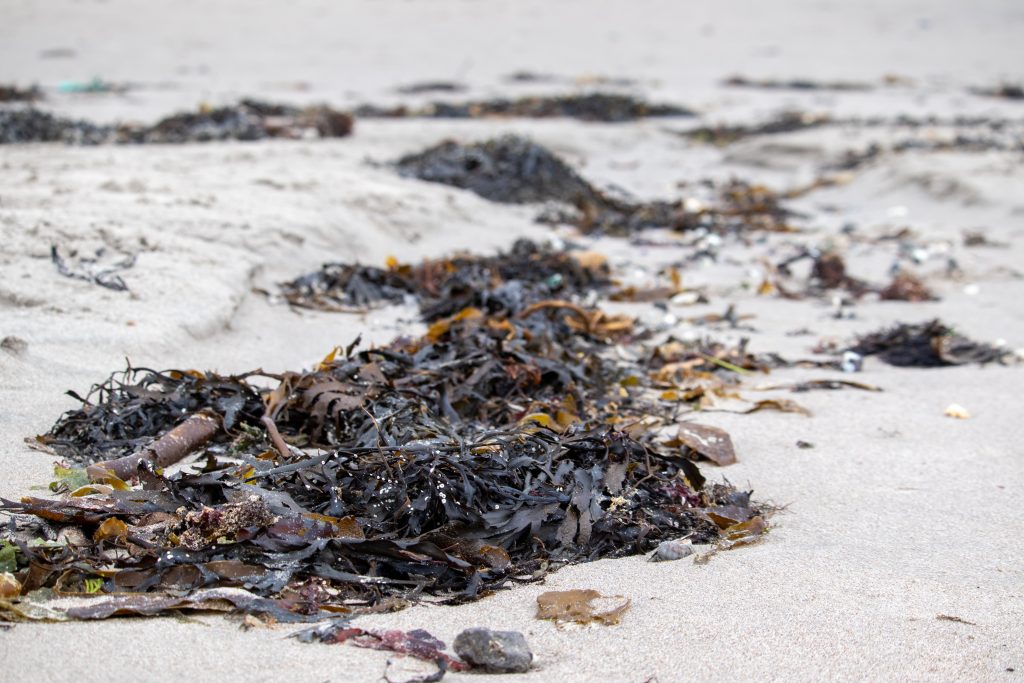Florida Beaches Will Soon Be Overrun By Smelly Seaweed, Here’s Why
Sargassum, a type of smelly seaweed, is increasingly showing up on Florida shores and negatively impacting both marine life and tourism in the state.
This article is more than 2 years old

Florida’s popular and pristine beaches are facing a potential environmental challenge. Brown, blobby gobs of smelly seaweed may be en route to engulf the state’s crystal-clear waters. This stinky seaweed, called sargassum, spreads quickly along the state’s coasts, which is terrible for the environment and the tourism industry.
In an in-depth and recent article about this particular type of smelly seaweed, USA Today asserted that the enormous seaweed bloom is part of a worldwide invasion of macro and microscopic algae blooms feeding on nitrogen in freshwater and marine habitats.
Sargassum is a type of seaweed that thrives in warm, nutrient-rich waters. It grows in the Sargasso Sea, located in the Atlantic Ocean, and is usually found in large mats that float on the surface. However, in recent years, there has been a significant increase in the amount of this smelly seaweed washing up on Florida’s beaches.
The cause of the sudden increase in sargassum is not entirely clear, but scientists believe that climate change may be a factor. The warming of the ocean temperatures and changes in ocean currents created ideal conditions for Sargassum growth. Additionally, increased nutrient runoff from human activities may contribute to the seaweed’s development.
While sargassum may seem harmless, it can impact the local ecosystem. As the seaweed decomposes, it depletes the oxygen levels in the water, creating what is known as a “dead zone.” These dead zones can devastate fish and other marine life, leading to massive die-offs.
Furthermore, sargassum can negatively impact the tourism industry in Florida. The pungent odor and unattractive look of this smelly seaweed can keep tourists from visiting the beaches, which means less money for local businesses. In some cases, the seaweed can even create a safety hazard for swimmers, as it can entangle people and marine life.
The state of Florida has taken measures to address the issue of sargassum. The Florida Fish and Wildlife Conservation Commission has launched a Sargassum Task Force to study the seaweed and develop strategies for managing its growth. Additionally, the state has invested in equipment to remove the seaweed from beaches and prevent it from reaching the shoreline.
One potential solution that has been proposed is using drones to detect and map the location of Sargassum mats in the ocean. This information can then be used to direct cleanup efforts and prevent the smelly seaweed from reaching the shore. Another way to stop the seaweed from getting to the beaches is to use natural barriers like seaweed fences.
Indeed, the issue of Sargassum in Florida is complex and multifaceted. While the smelly seaweed may seem like a minor nuisance, its impact on the local ecosystem and tourism industry cannot be ignored. To solve the problem, scientists, policymakers, and local communities must work together to develop practical solutions that balance environmental concerns with economic interests.
The sudden surge of Sargassum along Florida’s coastlines is an environmental crisis that demands urgent action. Although the root cause of this growth is still a mystery, the consequences of this seaweed’s expansion are far-reaching, impacting the local ecosystem and tourism industry. With the launch of the Sargassum Task Force and cutting-edge drone technology, however, Florida is taking proactive measures to manage the spread of this seaweed and safeguard its beaches for generations to come.




